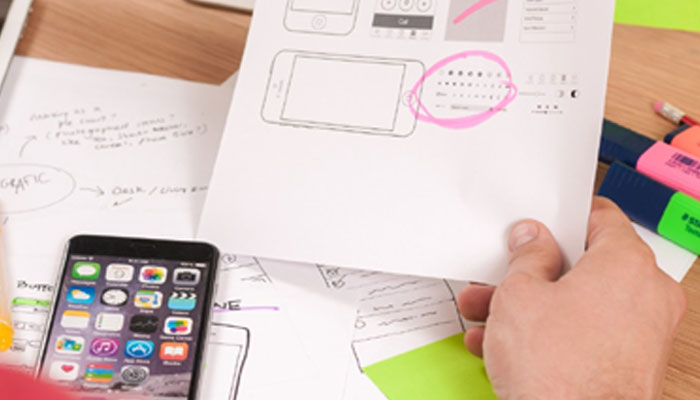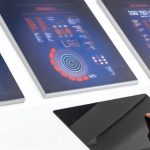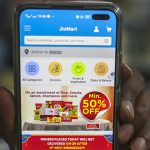Mobile App UX Design: Mobile UX design is a famous business buzzword, in today’s time. UX (User Experience) is an essential part of the mobile designing process. Mobile UX Design makes a product functional and useful and UI(User Interface) makes a product beautiful and interactive.
The aim of User Experience(UX) design is to provide optimistic experiences that keep consumers reliable to the product or brand. And, it tries to fulfill the consumer’s needs.
Also, a significant user experience(UX) permits you to describe customer journeys on the website that are most valuable to the business progress.
Designing an intuitive experience is vital to develop an alluring and engaging app.
Leading mobile UX Design is not a steady process, it is an ongoing method that continues to go a step forward with time. The mobile UX trend always changes within a period and you can never end up with it.
Which is working today, won’t work tomorrow. Thus, the best way is to keep going forward by establishing a new benchmark in mobile UX(User Experience) design. This can be done through ongoing A/B testing and changes over and again. One good golden rule for doing it is to customize your UX to emulate the best in your field. This is a cool and frigid technique to design a successful mobile UX design.
Further, You can also take a peek at these trending mobile UX(User Experience) design methods to enhance your App Engagement rate and User Retention.
1. Search for the Pearl (Key Feature) – Mobile App UX Design

In Mobile designing, it’s important to look at the key feature of the app. If a mobile app design is done with all the unnecessary things, it makes the app look boring and uninteresting.
So, while designing the mobile UX, always search for the pearl of the app means the key features of the app. It has seen that One key feature is better than the whole loop of ancillary features. Hence, determine the key feature in the app and make it accessible approx on every app screen. Because it will probably be the most used functionality of the app.
It could be doing payments, messaging, Scanning, and more. Design the app in that way and help users complete their key task by eliminating all insignificant tasks that mitigate the user experience. Compared to websites, the land of mobile apps is very narrow. It’s difficult for designers to work on the limited space and provide equal importance to every feature.
Listed below are some moves that will help your key feature to shine
- The first and most essential work is to highlight the key function and hide out all the unimportant functions.
- Design an easy process for users so they don’t have to work hard. Change texts with visuals.
- Create a smart default mechanism for users to retrieve data rather than making them enter the info, repeatedly.
- Help consumers to save data on the go. It will save the time of users.
- Don’t ask new users to rate your app. Firstly make them invest their time in the app. After that, you could ask them for sign-up and feedback forms.
- Don’t force users to register on the app immediately when they launch your app. So, remove the login bottlenecks.
Login and registering issues are common in most websites and mobile apps during store checkouts.
Several eCommerce websites and apps have made logins mandatory during the checkout process. But the process annoyed specifically the first-time users.
The eCommerce company believed that by making it mandatory, they would save users time.
As the users will not have to fill in the required fields like Name, shipping address, phone number, credit, and debit card details, repeatedly while checking out. But still, many users don’t like it and are unhappy about the mandatory login to check out.
Therefore, always look for the key features to add on the main screen of the app to provide a seamless user flow.
2. Simple Navigation – Mobile App UX Design
Navigation is one of the most vital components of mobile UX(User Experience) design. Simple navigation keeps the users attached to your application. So, it is very essential to make navigation easier, faster, and smoother.
Filling your app with needless features will diminish the speed of the app and bother the user experience. Thus, using trending forms and navigation processes will be beneficial for the app. Round forms are in trend and can be used to mainstream all required content components like images, icons, words, and more.
There is no problem with traditional navigation UI models like pulldowns, sidebars, etc.
It only means that the traditional UI has been overworked so much that users don’t consider them as a navigational tool anymore. The objective is, you will have to be more creative in terms of how consumers use your site. Without mixing the old and new patterns and compromising
on consistency parts, this can be done.
3. Color Schemes
Colors are one of the keys components for conversions. According to Kissmetrics infographic, people just take 90 seconds to build an instinctive judgment for a product. In this judgment, up to 90% of the review is based on color only.
According to a conducted study it is found that people choose simple color combinations with a focus on two or three colors. Designers can also try predetermined color charts that will assist to come up with new intellectual representations for UX design, mainly for beginners.
These predetermined color charts contain Homochromatic, Analogous, Complementary, Consumer color scheme.
Further, one color combination which is fixed for a process is Red and Green color. Both colors are used for setting up call-to-action buttons on the app. So, you also do the same for your app.
4. Emphasis on Key Features- 80/20 Rule
The “The 80-20 rule” is the Pareto Principle. The principle states that in several situations, 80% of the effects begin from 20% of the causes. In designing, 80% of the app users tend to utilize only 20% of its features. Now in this principle the question arises on which key app functionality you should focus on to make mobile UX experience satisfactory.
The answer can be found through mobile analytics to identify mobile users and the functionality that they use the most.
Once you found out the key features on your website, concentrate on improving the same on the app by making the features more simple, easy, and intuitive to handle.
4. One-handed Operation
It’s been found in research that almost 85% of the users operate their mobile phones with a single hand. But with the launch of the increased screen size of smartphones, mainly with iPhones, accessing the phone screen with one hand has become more difficult.
That’s why it has become very crucial for designers to design mobile apps keeping these points in mind.
It’s important for them to design the mobile UX in a way that could easily be accessed on larger screens with one hand.
5. Content as an Interface – Mobile App UX Design
Content is the King. The app content is one of the things that drive users to the app.
The content can be made in any form, like in news updates, social feeds, to-do lists, and more things like that.
It should be core to the app, for that you need to take away all the extra elements of the app that makes your app interface look messy. This is a crucial step for app design because users get minimum time to give attention time these days. Therefore, if you will provide the users with the content part immediately, it will be better for both. In brief, create content for the interface.
6. Add Walkthroughs or Coach Marks
In mobile UX designing at some parts it’s important to use a walkthrough or coach marks to make complex things simple.
You will have to add several types of tools and content to make hard things sound simpler to the consumer.
Coach Marks can also be used to highlight the core points of a user interface, just like Youtube does.
So, a tutorial, walkthrough or coach marks will help you to make your app’s complex things simple and understandable for users.
Core facts to remember while designing the app for larger screens
Keep the Green Zone for Essential Actions:
The Green Zone is the part that can easily be accessed by hand. So, keep the activities like Control keys and general action items in the green zone of the screen.
Thus, these items can easily be accessed by the user with the thumb.
Keep the Red Zone for Destructive Actions:
Red Zones are the part of the screen that is not easy to reach with your thumb. So, it will be beneficial to keep destructive actions such as erase, and delete actions to the red zone.
Because there are high chances of users to accidentally tap on them.
Conclusion:
Mobile UX design is an evolutionary process. It always evolves with time and trend. Few of the 2020 design trends returned from the last century Like accent typography. On the other hand, due to high-speed Internet and the increasing number of users of the world network, the number of interactive components in mobile applications will increase.
Keep the pearl(key feature) of the app on the main screen and remove the potatoes( unwanted or needless features) from it. Furthermore, the design should be A/B tested over and over again to make sure users are happy and satisfied with your app. To be unique and competitive in the market, it’s essential to keep changing your mobile UX(User Experience) design patterns. The evolving UX designs will stick your user to the mobile app and also fulfill their requirements with changing trends.
























